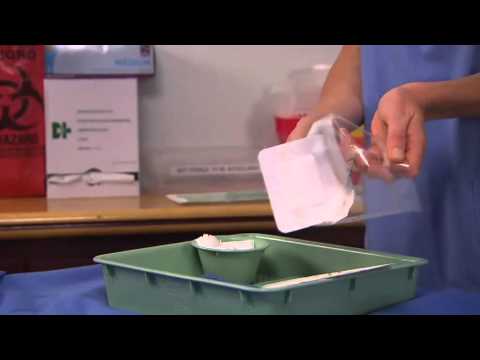Pennsylvania’s Medical Assistance Transportation Program
Contents
- Introduction to Pennsylvania’s Medical Assistance Transportation Program
- Eligibility requirements for Pennsylvania’s Medical Assistance Transportation Program
- How to apply for Pennsylvania’s Medical Assistance Transportation Program
- What services are covered by Pennsylvania’s Medical Assistance Transportation Program?
- How to use Pennsylvania’s Medical Assistance Transportation Program
- What are the benefits of using Pennsylvania’s Medical Assistance Transportation Program?
- How does Pennsylvania’s Medical Assistance Transportation Program work?
- What are the drawbacks of Pennsylvania’s Medical Assistance Transportation Program?
- How can I get more information about Pennsylvania’s Medical Assistance Transportation Program?
- Conclusion
The Pennsylvania medical assistance Transportation Program provides non-emergency medical transportation services to eligible individuals.
Checkout this video:
Introduction to Pennsylvania’s Medical Assistance Transportation Program
Pennsylvania’s Medical Assistance Transportation Program (MATP) provides transportation to and from medical appointments for Medicaid recipients.
MATP is a shared ride program. This means that you will be sharing a ride with other MATP participants who have medical appointments at approximately the same time and location as you.
In order to use the program, you must first call a MATP broker in your area. The broker will ask you some questions about your transportation needs and will then help you schedule your rides.
You can call a broker up to 21 days in advance of your medical appointment, but please keep in mind that MATP is a shared ride program and that all requests are scheduled on a first-come, first-served basis.
For more information on Pennsylvania’s Medical assistance Transportation Program, please visit the website or call the customer service number.
Eligibility requirements for Pennsylvania’s Medical Assistance Transportation Program
In order to be eligible for Pennsylvania’s Medical Assistance Transportation Program, you must meet the following requirements:
-You must be a Pennsylvania resident
-You must be eligible for medical assistance through the Pennsylvania Department of Human Services
-You must have a scheduled medical appointment or be receiving treatment from a health care provider that is enrolled with the program
-Your medical appointment or treatment must be at a facility that is enrolled with the program
-Your medical appointment or treatment must be for a condition that is covered by the program
How to apply for Pennsylvania’s Medical Assistance Transportation Program
In order to be eligible for Pennsylvania’s Medical Assistance Transportation Program, you must first meet the program’s eligibility requirements. You must be a Pennsylvania resident, have a medical condition that requires transportation assistance, and be enrolled in Pennsylvania’s Medical Assistance program. If you meet these requirements, you can then apply for the program by completing an application and providing supporting documentation to your county’s medical assistance office.
What services are covered by Pennsylvania’s Medical Assistance Transportation Program?
Pennsylvania’s Medical Assistance Transportation Program (MATP) assists eligible medical assistance recipients with transportation to and from medical appointments. The program covers a wide range of transportation services, including:
-Public transportation (buses, subways, etc.)
-Specialized transportation services for persons with disabilities
-Carpooling
-Ridesharing
-Taxi services
How to use Pennsylvania’s Medical Assistance Transportation Program
If you have medical assistance, you may be able to get help with transportation costs. Pennsylvania’s Medical Assistance Transportation Program (MATP) can help you with the cost of getting to and from medical appointments.
You may be able to get MATP services if you:
-Have medical assistance
-Live in Pennsylvania
-Are going to or from a medical appointment that is:
–Covered by medical assistance
–Medically necessary
–More than 3/10 of a mile from a public transit stop OR more than 3/4 of a mile from your home (whichever is closer)
-Are unable to get transportation from friends, family, or another ridesource
What are the benefits of using Pennsylvania’s Medical Assistance Transportation Program?
Pennsylvania’s Medical Assistance Transportation Program (MATP) provides non-emergency transportation to medical appointments for eligible low-income residents. Using MATP can help people get to the doctor for regular checkups and important medical appointments, as well as preventing them from having to miss work or school due to transportation problems.
How does Pennsylvania’s Medical Assistance Transportation Program work?
Medical Assistance Transportation Program (MATP) provides non-emergency transportation services to eligible Medical Assistance recipients. This program is designed to help individuals get to and from their doctor appointments, and other necessary medical appointments.
To be eligible for this program, individuals must be residents of Pennsylvania, enrolled in Pennsylvania’s Medical Assistance program, and have no other means of transportation available to them.
Individuals can receive transportation services through MATP in a number of ways, including public transportation, volunteer driver programs, private transportation companies, and statewide ride-sharing programs.
What are the drawbacks of Pennsylvania’s Medical Assistance Transportation Program?
Since its inception, Pennsylvania’s Medical Assistance Transportation Program (MATP) has been criticized for being inefficient and expensive. In a 2012 report, the Pennsylvania Auditor General’s office found that the program cost the state more than $140 million annually, but only served about 4 percent of eligible recipients.
The report also found that MATP was often used to transport non-emergency patients to medical appointments, while patients in need of emergency transportation were often left waiting for hours or even days. The office also found that MATP vehicles were often parked at hospitals or other medical facilities for long periods of time while waiting for patients.
In addition to these criticisms, MATP has also been accused of being ineffective in terms of transportation. In a 2014 study, researchers at the University of Pittsburgh found that MATP recipients were more likely to miss their medical appointments than those who did not use the program. The study also found that MATP recipients were more likely to be readmitted to the hospital within 30 days of their discharge.
How can I get more information about Pennsylvania’s Medical Assistance Transportation Program?
You can get more information about Pennsylvania’s Medical Assistance Transportation Program by contacting the Pennsylvania Department of Human Services.
Conclusion
The Pennsylvania Department of Health’s Office of Long-Term Living has released the results of its much-anticipated review of the state’s Medical Assistance Transportation Program (MATP). The report concludes that the program is “largely effective” but makes a number of recommendations for improvements, including increasing funding, streamlining eligibility criteria, and improving coordination among various state agencies.
The MATP provides transportation assistance to eligible low-income Pennsylvania residents who need help getting to and from doctor’s appointments, pharmacies, and other medical appointments. The program is administered by the Department of Health, with assistance from the Pennsylvania Turnpike Commission and the Pennsylvania Public Utility Commission.
Since its inception in 1974, the MATP has helped countless Pennsylvanians get the medical care they need. However, in recent years the program has come under increased scrutiny due to concerns about its cost effectiveness and efficiency. In response to these concerns, the Pennsylvania Legislature directed the Department of Health to conduct a thorough review of the program.
The report includes a number of recommendations for improving the MATP, including:
– Increasing funding for the program
– Streamlining eligibility criteria
– Improving coordination among various state agencies
– Improving data collection and reporting







